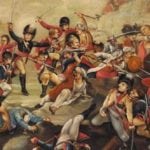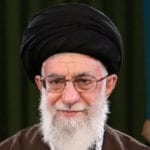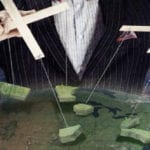 Weird Stuff
Weird Stuff  Weird Stuff
Weird Stuff  Our World
Our World 10 Ways Your Christmas Tree Is More Lit Than You Think
 Movies and TV
Movies and TV The 10 Coolest Stars to Set Sail on The Love Boat
 History
History 10 Things You Didn’t Know About the American National Anthem
 Technology
Technology Top 10 Everyday Tech Buzzwords That Hide a Darker Past
 Humans
Humans 10 Everyday Human Behaviors That Are Actually Survival Instincts
 Animals
Animals 10 Animals That Humiliated and Harmed Historical Leaders
 History
History 10 Most Influential Protests in Modern History
 Creepy
Creepy 10 More Representations of Death from Myth, Legend, and Folktale
 Technology
Technology 10 Scientific Breakthroughs of 2025 That’ll Change Everything
 Weird Stuff
Weird Stuff Ten Bizarre Facts About The Doge Meme
 Our World
Our World 10 Ways Your Christmas Tree Is More Lit Than You Think
 Movies and TV
Movies and TV The 10 Coolest Stars to Set Sail on The Love Boat
Who's Behind Listverse?

Jamie Frater
Head Editor
Jamie founded Listverse due to an insatiable desire to share fascinating, obscure, and bizarre facts. He has been a guest speaker on numerous national radio and television stations and is a five time published author.
More About Us History
History 10 Things You Didn’t Know About the American National Anthem
 Technology
Technology Top 10 Everyday Tech Buzzwords That Hide a Darker Past
 Humans
Humans 10 Everyday Human Behaviors That Are Actually Survival Instincts
 Animals
Animals 10 Animals That Humiliated and Harmed Historical Leaders
 History
History 10 Most Influential Protests in Modern History
 Creepy
Creepy 10 More Representations of Death from Myth, Legend, and Folktale
 Technology
Technology 10 Scientific Breakthroughs of 2025 That’ll Change Everything
10 Times Governments Edited Textbooks To Rewrite History
History is not the same everywhere. How else can we explain historical accounts of an event differing from nation to nation? Since the 20th century, several governments have realized that they could rewrite history to their own benefit. And they have been doing just that.
Governments promote these edited versions of history through their schools and textbooks. Their students learn a distorted account of history, which they will often believe into adulthood. Surprisingly, misrepresenting history is not a Third World problem. It cuts across developed and developing economies. However, Asian nations seem to be at the forefront.
10 South Korea
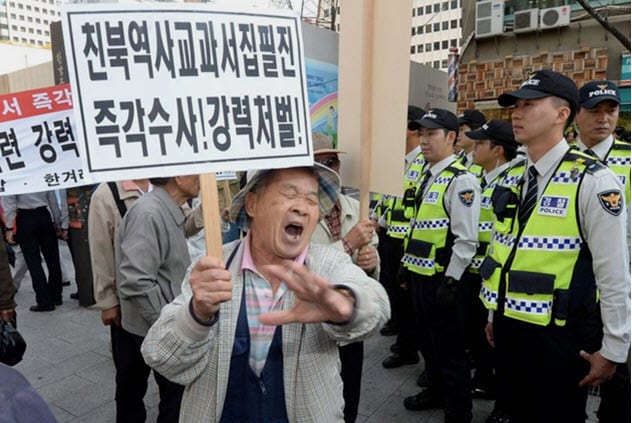
In 2015, the South Korean National Institute of Korean History drew national attention after making controversial edits to the country’s history textbooks. The changes provided overtly positive views about South Korea and promoted negative views about Japan and North Korea. Specifically, they stepped up the criticism of North Korea and condemned its ideology of juche (“self-reliance”).
Conservatives, who suggested the edits, raised concerns that South Korean youths could grow up to admire juche even though North Korea was not self-reliant. North Korea depends on China for major needs, including oil and food. Conservatives also denounced current history textbooks for blaming North and South Korea for the Korean War even though it was North Korea that attacked first.
Conservatives added that current textbooks—which they say are written by liberals—extensively criticized the military regime of Park Chung-hee, who got into power after a coup in 1961. They said that current textbooks downplayed his achievements and beamed their lights on the crimes of his government. Curiously, Park Chung-hee’s daughter, Park Geun-hye, was president when the history textbook edits were proposed.
The conservative South Korean government planned to introduce the textbooks into the country’s schools by March 2017. This would be followed by a ban on every other history textbook in use at the time. The government backtracked on the ban after a series of protests and criticism that the government was trying to brainwash the populace.[1]
9 Iraq
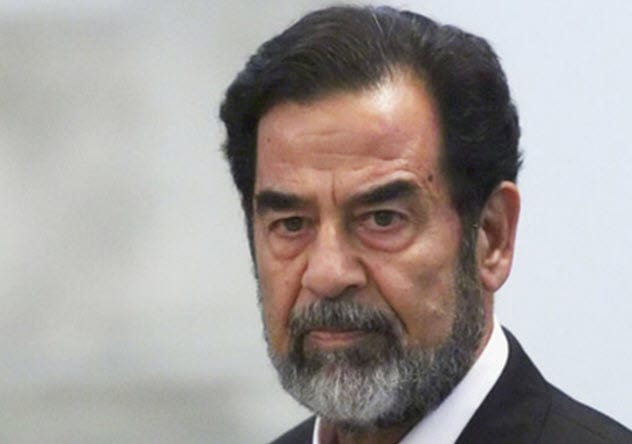
In 1973, Saddam Hussein had the history textbooks of Iraq rewritten to promote himself and the ideology of his Ba’ath Party. According to the revisions, Hussein had saved the Arab lands from the incursion of the Jews, whom he called greedy people.
Years later, Hussein’s version added that Iraq had won the Iran-Iraq War of 1980–88 and the 1991 Gulf War against the US. Both were false. These textbooks became a source of concern for the US-led coalition that toppled Saddam’s government in 2003.
Working closely with a team of Iraqi educators, the US government removed every reference to Saddam Hussein and the Ba’ath Party. They deleted several references to Iran, Kuwait, Jews, Kurds, Sunnis, Shias, and the US. The educators also edited the details of the 1991 Gulf War to make it “less controversial.”[2]
8 India And Pakistan
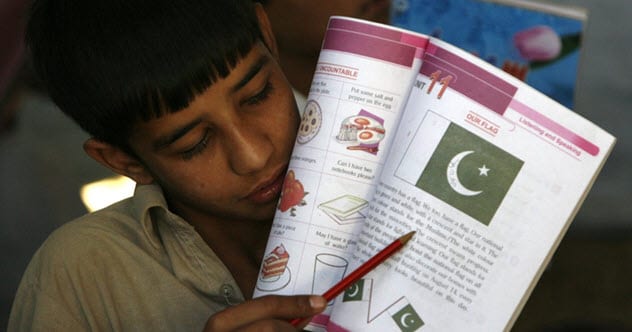
India and Pakistan have had a troubled relationship ever since they gained independence from Britain in 1947. The tense relationship between both regions led to the partitioning of British India into India and Pakistan that year. This was followed by several riots, wars, and the consequent independence of Bangladesh from Pakistan.
These days, either nation is always exploring ways of getting back at the other. They have taken their wars to schools where they have edited their history books to teach a skewed version of past events to their citizens.
History textbooks in both nations provide different reasons for the 1947 partitioning. Pakistani textbooks claim that Pakistani Muslims seceded from India after the Indian Hindus turned them into slaves right after independence. Meanwhile, Indian textbooks claim that the Pakistanis only used the creation of a new country as a bargaining chip and never really wanted one.
India and Pakistan were enmeshed in a series of deadly riots that killed 200,000–500,000 people right after the partitioning. While Pakistani textbooks blame India for the riots by claiming that the Hindus attacked first, Indian textbooks suggest that both sides were guilty.
History textbooks printed in either nation also claim victory in the 1965 war. Pakistani textbooks claim that India “begged for mercy” and “ran to the United Nations” after suffering a series of defeats at the hands of the Pakistani military. Indian textbooks claim that India had almost reached Lahore in Pakistan before the UN ordered the end of hostilities.
On the subsequent partitioning of Bangladesh from Pakistan, Pakistani textbooks accuse India of supporting Bangladesh during the Bangladesh Liberation War that led to the independence of Bangladesh. Indian textbooks accuse Pakistan of attacking the Bangladeshis and claim that India only helped a group of people fighting for freedom.[3]
7 Japan
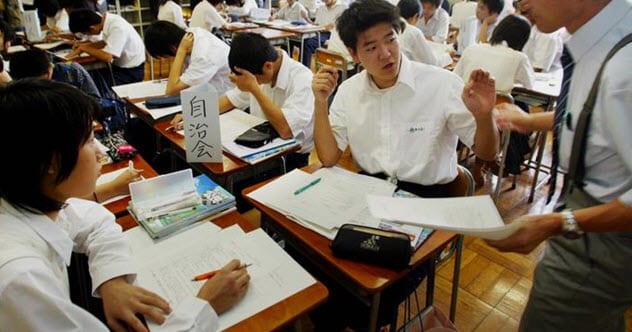
Japan has a strained relationship with China and South Korea. Massive anti-Japanese sentiment arose in both nations during the 20th century due to territorial disputes and World War II when Japan invaded and committed war crimes against the citizens of China and Korea.
In 2017, the Japanese government was exposed for editing the history books of junior high school students. The edits were spearheaded by the ironically named “Society for the Dissemination of Historical Fact.” The group removed parts of Japanese textbooks containing references to the 300,000 Chinese murdered during the infamous 1937 Nanjing Massacre.
The books deleted references to the 400,000 Korean and Chinese women whom Japan forced into prostitution during World War II. The new textbooks also blamed the US for the bombing of Pearl Harbor. Its authors claimed that the bombings were in response to several trade embargoes that the US placed on Japan, which Japan considered an informal declaration of war.
Critics said the textbook was an attempt to absolve Japan of the extensive war crimes it committed during the 20th century. Curiously, The Society for the Dissemination of Historical Fact was already working on a fourth edition at the time of the controversy. This indicates that the Japanese government is slowly removing controversial paragraphs from its history books year after year.
Hiromichi Moteki, the society’s director, disagrees that the Japanese government was editing history. He insists that the new textbooks are accurate, unlike the incorrect accounts promoted in Chinese and Korean textbooks.
Moteki added that Japan actually developed Korea and improved the quality of life of its citizens after invading Korea in 1910. According to him, it was the Koreans who actually exploited the Japanese and not the other way around as everyone believes. He also passed the Nanjing Massacre off as “communist propaganda” and said that the Japanese military never used women as prostitutes.[4]
6 China
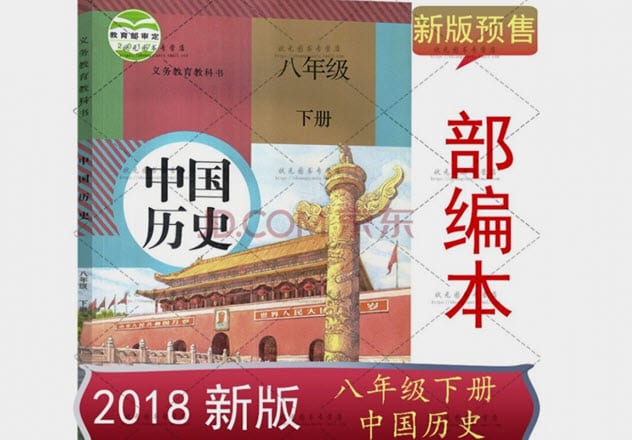
In 1966, Chinese leader Chairman Mao Tse-tung introduced a set of reforms that he called the Cultural Revolution. He claimed that it was part of an attempt to realign China with its communist ideology. However, on the inside, it was also a part of Mao’s ploy to regain his position as the leader of the Chinese Communist Party.
Over the next 10 years, Chairman Mao clamped down on several individuals, leading to a series of protests and other acts of civil disobedience that only ended after his death in 1976. The period is controversial in Chinese history, which prompted the government to remove details about the revolution from its history textbooks in 2018.
An entire chapter about the Cultural Revolution was taken out of the state-approved history textbook and replaced with one about the development of China. The deletions included every reference to the protests and government-backed violence that rocked China at the time. Editing history was easy for the Chinese government because the textbooks are published by the government-owned People’s Education Press.[5]
5 Taiwan
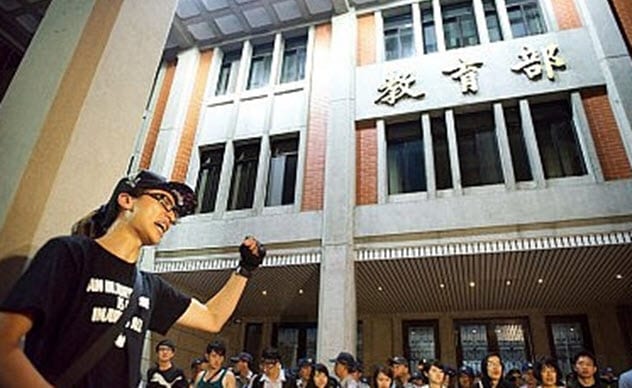
In 2015, a series of protests erupted in Taiwan after the government attempted to edit high school history textbooks and distort the history of the nation. The edits were considered part of a long-term plan to reunite Taiwan with China.
Taiwan’s plan to edit the accounts of past events began in 2013 when some Taiwanese professors launched a government-approved program to “fine-tune” the island’s history. In February 2014, the professors announced that they had made some corrections to Taiwan’s history and planned to have them introduced to schools by August 2015.
The changes included the renaming of the Taiwanese Zheng dynasty to the Chinese-Taiwanese Ming Zheng dynasty, after the Ming dynasty that ruled mainland China between 1368 and 1644. However, Taiwan was never a part of the Ming dynasty and only became part of China in 1683.
Other corrections saw the professors alter the history of Taiwan after the Republic of China government under the Kuomintang took control of Taiwan in 1949. The revisions were followed by a series of protests by Taiwanese high school students who requested that the government scrap the attempt to edit their textbooks. A professor (who was not involved in the project) claimed that the edits would alter 60 percent of Taiwan’s history.[6]
4 Afghanistan
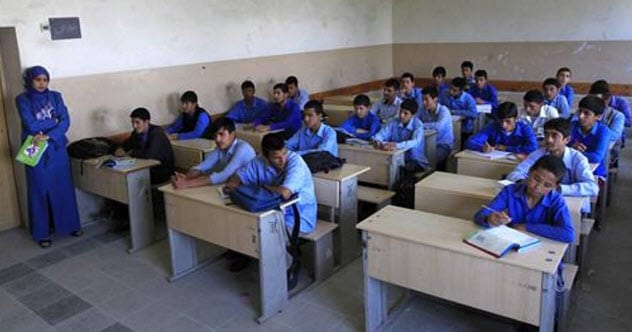
In 2012, Afghanistan’s education ministry updated its history curriculum. This led to the instant deletion of 40 years of the nation’s history, including life under the communist government of Afghanistan, several coups in the 1970s, and the 1979 Soviet invasion.
The curriculum also excluded details about the anti-Soviet resistance led by the mujahideen (which later became the Taliban), the deadly civil war fought by the mujahideen factions after the Soviet Union was expelled, and the consequent US invasion and occupation. Any reference to these events was to be completed in a few lines.
The government said the edits were necessary to unify the divided nation where citizens have more allegiance to their tribes, clans, and political beliefs than to the nation itself. Critics say the revisions were an attempt to seek approval from the Taliban and other armed groups in conflict with the government.[7]
The history curriculum taught in schools at the time depicted these armed groups as bad people. The government could be trying to have them in agreement as US forces leave Afghanistan. One critic likened the deletion of information about the US invasion and occupation to an attempt “to hide the Sun with two fingers.”
3 Turkey
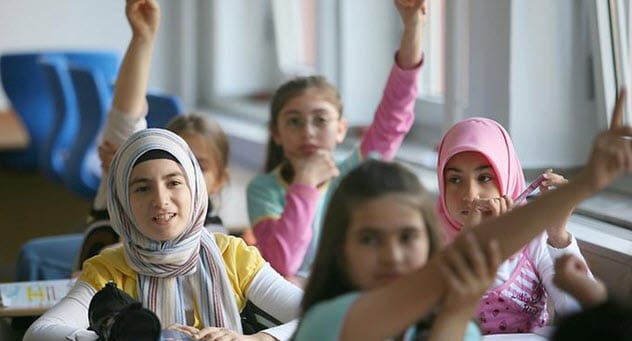
Schools in Germany use Turkish textbooks to teach Turkish students about Turkish history. As of 2013, the government-approved history textbook was Turkce ve Turk Kulturu (“Turkish and Turkish Culture”). However, the book generated so much controversy that people started to call for its ban.
Critics said that Turkce ve Turk Kulturu often altered history to the benefit of Turkey. Like other Turkish history textbooks, it omits or alters several references to the genocide that led to the death of 1.5 million Armenians during and after World War I.
Instead, the authors claimed that the Armenians teamed with the Allies (which included Russia, Britain, and the US) during World War I to destroy the Ottoman Empire, which broke into several nations (including Turkey) after the war. The authors also claimed that Armenia willingly ceded their lands to Turkey after the war, which is false.
Critics also condemned the book over concerns that it aggressively promoted Turkish nationalism. This was because it contained an oath of loyalty to the Turkish state: “It’s my goal to protect the young, honor the aged and love my country and motherland more than myself.”
The book was issued by the Turkish education ministry and distributed by the Turkish embassy.[8]
2 Chile
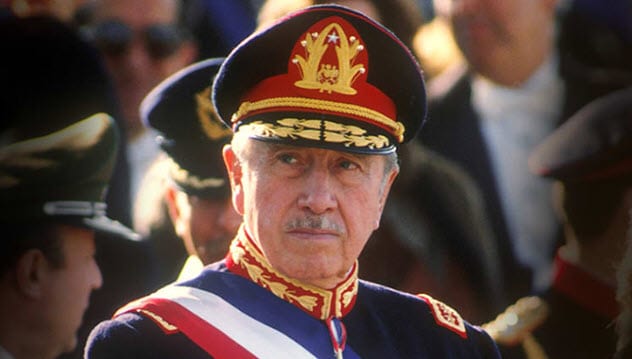
In 2012, Chile found itself in a quagmire after its education ministry tried editing parts of its history textbooks relating to the government of General Augusto Pinochet who ruled Chile until 1990. The new books labeled Pinochet’s government a “regime” instead of a “dictatorship.”[9]
Critics, who were mostly from the left-wing opposition, claimed that the reclassification was an attempt to rewrite history to appease the ruling center-right government, which found favor with the general when he was in power. The government denied the claims, saying it only wanted to use a less politically charged word.
1 Serbia
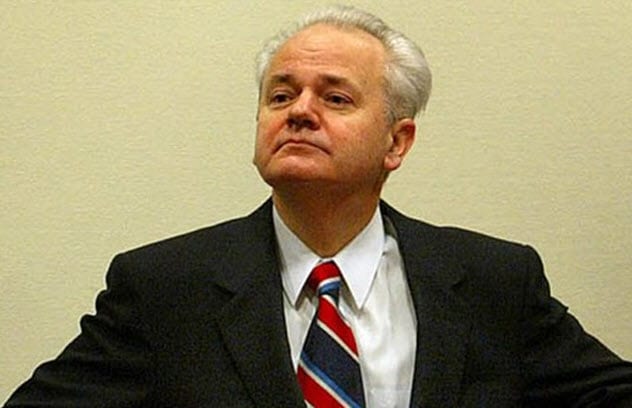
Slobodan Milosevic was the president of Serbia from 1989 until 1997 when he became the president of the Federal Republic of Yugoslavia. The Federal Republic of Yugoslavia should not be confused with Yugoslavia, which broke into several independent states between 1990 and 1992.
Serbia and Montenegro were parts of the new states. Both nations soon merged to create the Federal Republic of Yugoslavia, which was not recognized in the West. However, the union hung on until 2003 when it was renamed the Union of Serbia and Montenegro. Three years later, they split into two separate states.
Milosevic is infamous for causing four wars—in Bosnia, Croatia, Kosovo, and Slovenia—during his reign. He is also accused of ethnic cleansing in Bosnia and Croatia. However, all that came to an end when his government fell after massive protests in October 2000.
Milosevic edited Serbian history textbooks while in power. He filled them with propaganda and accused other nations of hating Serbia for no reason. Coincidentally, he found himself at the receiving end of a history edit in 2001 when the new Serbian government removed every reference to him from history books.[10]
The new Serbian history textbooks cleverly avoided mentioning Milosevic’s name even though they recounted several events closely linked to him, including the 1999 Kosovo war, the 1999 NATO bombing of Serbia, and the October 2000 protests. For instance, a line from the edited textbooks only mentioned “Massive demonstrations in Belgrade on 5 October 2000” without specifying that Milosevic was the target of the protests.
Radoslav Petkovic, the director of the state publishing house that produced the textbook, later clarified that they had avoided mentioning the names of key government figures in Serbia within the previous 10 years. He added that they had tried to ignore that 10-year period of Serbia’s history.
Read about more discoveries that could rewrite history on 10 Mysterious Discoveries That Could Completely Rewrite History and 10 Recent Archaeological Finds That Rewrite History.
